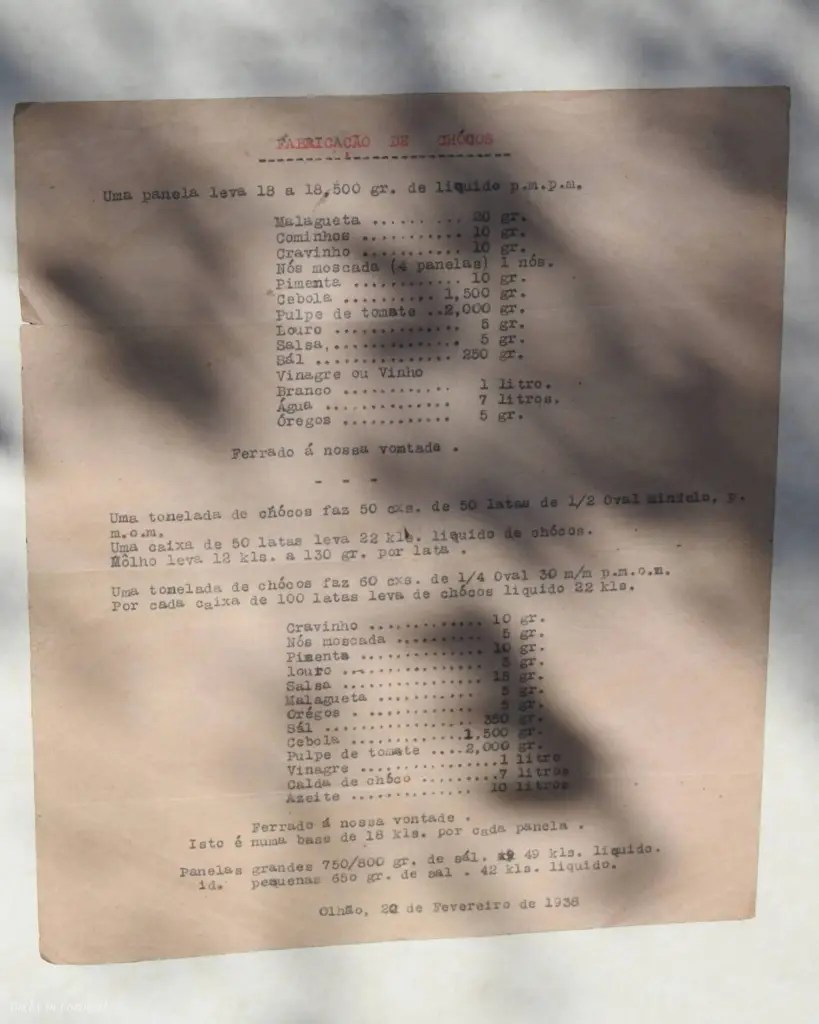If you follow me on Instagram then you will have known for a week or so that this post was coming. There’s a brand new outdoor exhibition in Olhão, celebrating that this small town was once the main centre for canning in the Algarve, and at its peak it was considered to be one of the most important canning places in Portugal. These days there are only a few factories left in Olhão, including Conserveira do Sul and Faropeixe (Fides) but Portugal remains one of the leading exporters, with canned fish accounting for one third of their seafood exports.

The conservation of fish has been around for thousands of years, and salted cod is probably one of the best known examples of preserved fish. Canning however is relatively new; and there is a fascinating and complex story about how it developed in the early 19th century. It involves two Frenchmen (Nicolas Appert & Philippe de Girard), two Englishmen (Peter Durand & Bryan Donkin), and the French and British navy. Rather than describe it all here I recommend you read this informative BBC News magazine article.

The first modern canning factory to open in the Algarve was in Bairro do Levante in Olhão, where the exhibition is now located, and it was owned by a Frenchman, Frederico Delory. There is though some confusion over the year it opened. Many tourist websites indicate the year the first factory opened was 1882, and even the excellent Conservas de Portugal Digital Museum section on Olhão (downloadable version) suggests it was between 1881 and 1882. However according to the new exhibition all that is definitely known is there were no factories in 1881! The first written record for Delory’s factory is 1887, although it is known he purchased property/land in Bairro do Levante in 1884.
By 1906 there were at least seven factories in Olhão, and by 1916 a further ten had opened. The peak for number of canning factories was in the 1920s with at least 40 factories open in the town and probably more. There are no definite numbers since many were unlicensed, record keeping was poor on occasion and permits were often transferred between companies.
In the later years most of the factories were located in the north of the town as there wasn’t much vacant land left in Bairro do Levante in Olhão. By the mid 1970s there were less than a dozen factories altogether and all were struggling to survive. There is an article here from 1976 in the New York Times which details the challenges facing the factories.
The exhibition “Memories of Our History: The Canning Industry in Olhão” is not very large, and I suspect most people will just glance at one or two of the boards as they walk through Largo da Fábrica Velha. However if you are as fascinated as we are by Olhão’s industrial heritage you could easily spend up to half hour here looking at the photographs, checking out the labels, reading the canning recipes and wondering if any of the workers listed are in the fantastic murals in Largo and Rua da Fábrica Velha.








You may spend even longer here as there is also a great map showing the location of 51 factories, and listing the names of another 20 whose location has yet to be determined. There were three main areas and our apartment overlooks one of them – Sul Prainhas. We were fascinated by this map, and you may not be surprised to learn that we have already started our mission to find what if anything remains. So expect further posts, for now though here’s another view of the superb murals.

By the way this is not my first post on Portugal’s canning industry. If you have a moment why not also check out the following;
- Olhão, the home of Good Boy – a short history of Conserveira do Sul
- The canning of the fish (bancada de enlatamento)
- The art of lithography and canning
- The tuna fishermen of the Algarve
- Olhão’s fishing history depicted in the stunning murals
- There are two types of country people in Olhão – os montanheiros, e os marítimosfarers
Fascinating
Was so pleased to have seen it before we left.
Will have a look when we’re over that way. Sounds like the perfect research project for you. All ok at home?
We’ve already started the research!!
A great piece of history. I enjoyed it.
Thanks Andrew
A very interesting post Becky, I’ll check out the magazine article and your other posts later. I love the mural too, it’s fabulous 🙂
Thank you so much, and yes do if you have time 🙂
I like this latest installment of the canning industry. It is good to have the new signage to help understand the history. Also love murals 🙂
Thanks Brian. I enjoyed writing this one 😀
Fascinating stuff – and I DO follow you on Instagram, but I haven’t seen a post from you in a while. I find it as moody as WP can be! I love the industrial pasts of all those towns that in many cases have seen better days – our own little town in France was one. But it looks as though Olhão has successfully reinvented itself? I’ll browse through your links later – thanks.
I wish Instagram wasn’t owned by Facebook!
Thought you might enjoy exploring industrial pasts as much as me. It has taken a while to re-invent itself. The last decade or so.